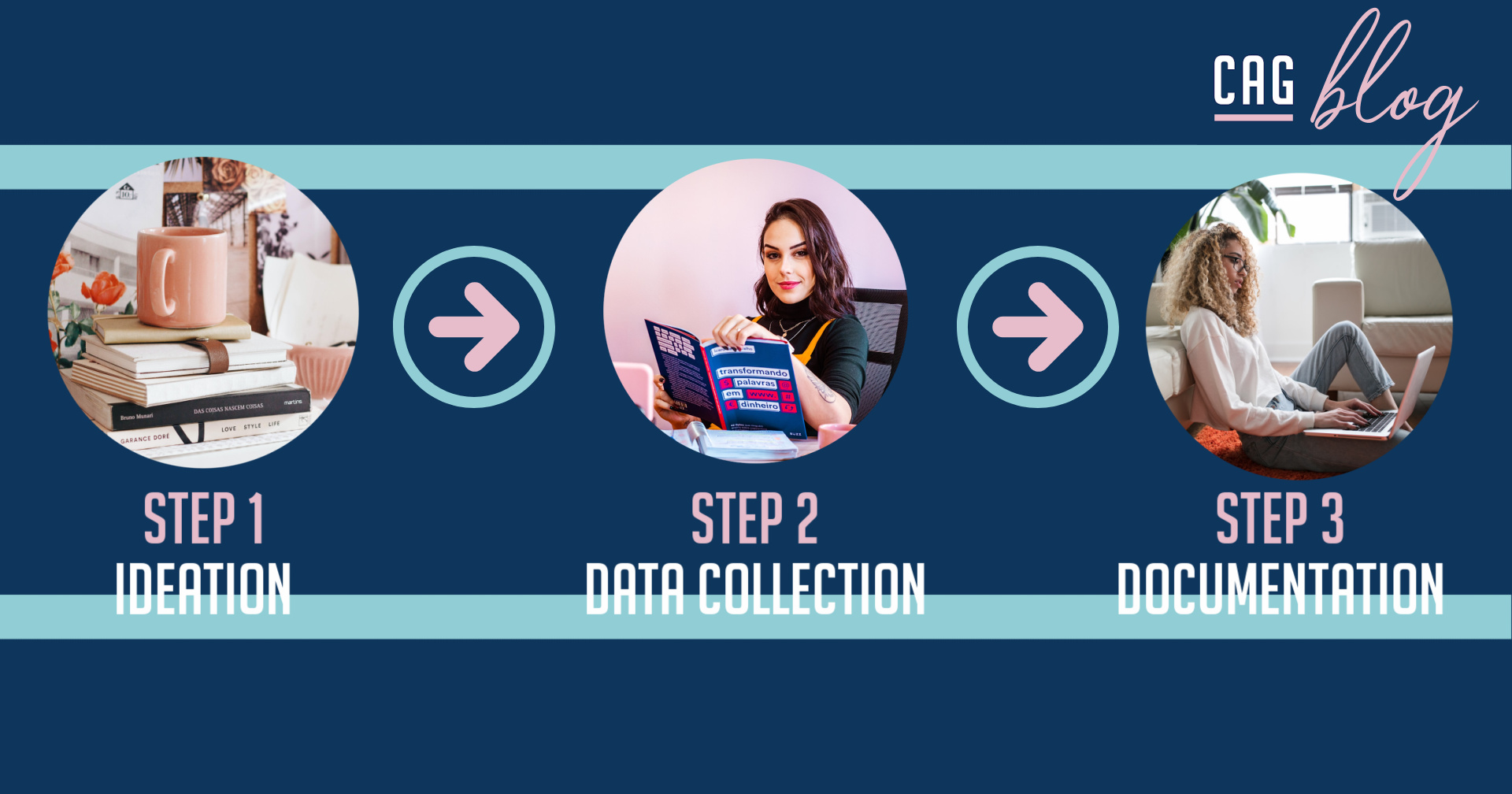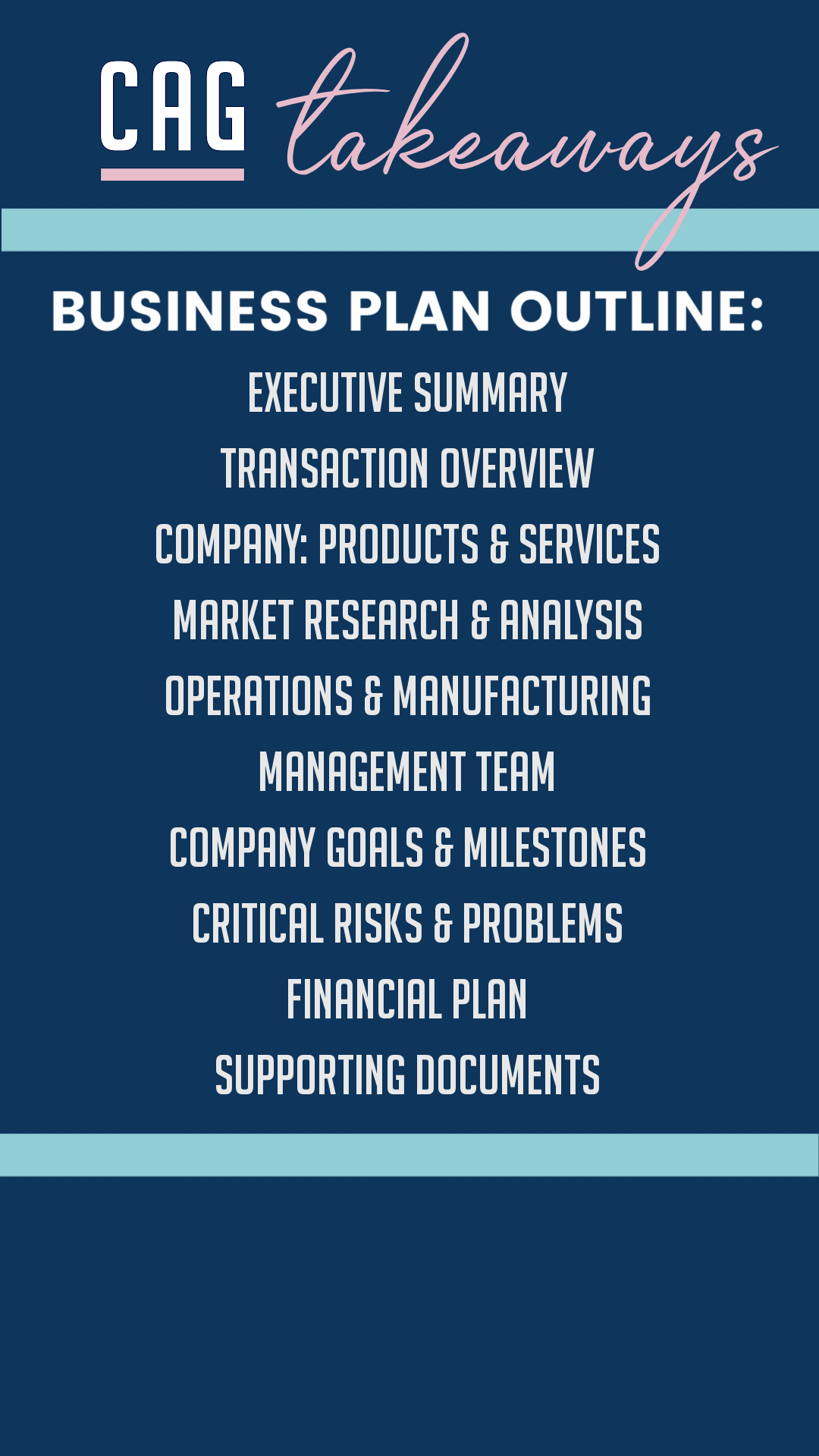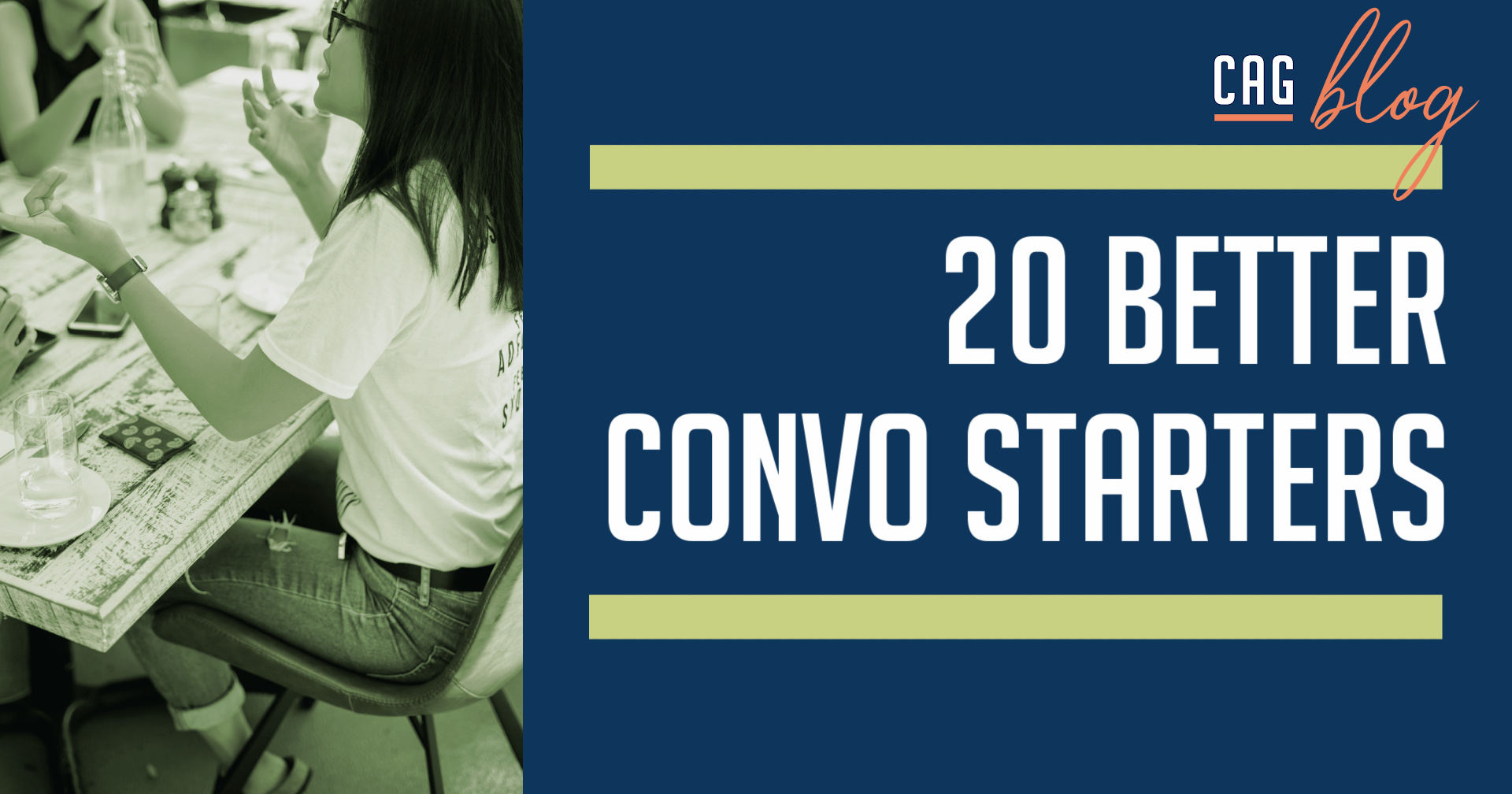
Writing Your First Business Plan – Free Template
Writing your first business plan is one part knowledge, and another perseverance. Modern sentiment suggests that as an entrepreneur, you may no longer even need to write a plan. However, I feel the diligence and act of committing the business’ goals and future in writing somehow makes it seem more real. (Oftentimes both for you, and your people.) That’s why I’ve created a simple way to help newbie entrepreneurs get started with a three-phase approach as well as a free template to create your first business plan. So let’s dive into how you write it, and what should be in it when you finally get there.
STEP 1: IT ALL STARTS WITH AN IDEA
You’ve got a million great ideas floating around in your head. You just know, if you’d commit to any of them (or even one of them), you could be the next millionaire. Or at least living your best creator life. Sound familiar?
One of the hardest things to do is to just start. That’s why I suggest people just begin by noodling on their ideas. Use some serious thinking time to formulate the concept. What will it be? What will it do? What will you do in it? Why’s your idea unique, clever, interesting or more compelling than others like it? Why might one idea be better to pursue than another for you?
Journaling at this point could be incredibly helpful. The notes you take here don’t need to be perfect. But they do need to get out of your head and somewhere you can reach them later. Notes, scribbles and doodles turn into some of the best ideas we’ve ever experienced.

STEP 2: DATA COLLECTION – GATHERING FACTS
There’s a couple of parts to data collection when you’re writing your first business plan. Don’t worry—our free template touches on both. One part is the data you’ll create to explain your new new idea, how it will work, and why it will be successful. (More on that part in the next section.) The other sort of data is secondary research—the sort that you’ve got to pull from elsewhere to substantiate your claims.
This part of the business plan process is particularly helpful because it makes you stop, focus and learn about your competitive marketplace. You’ll come across all sorts of jargon when you get to this phase. Do not be intimidated by this. Jargon is a thing people make up to separate the “knowers” from the “do not know yet”-ers. And you, my friend, can be a knower in no time flat. It’s just a matter of some quick-paced education while you’re also working on your important research.
Research can be particularly helpful in deciding how you should price your new idea, and what your total attainable market (or TAM) will be. Side note: That’s some jargon right there. It’s helpful to figure out right away if your new idea is something that will replace your current career or perhaps supplement it. You don’t want to find this out after you’ve quit your job. According to Guidant Financial’s 2021 Small Business Trends Report, nearly 40% of all entrepreneurs still use their own liquid cash to start, followed closely by other personal funding sources such as retirement rollover accounts, friends and family, and loans. Understanding your first 12 – 24 months’ of cash flow needs is critical.

STEP 3: DOCUMENTATION – PULLING IT ALL TOGETHER
Now that you’ve spent significant time noodling on your idea, and supplemented that time with real, secondary research, it’s time to actually build your first business plan with our free template. (Or, you can go your own way as Fleetwood Mac reminds us.)
The business plan has several important sections (which we’ll cover briefly) but it’s important to realize that you’ll feel much better about being in the right headspace about your new idea if you’re intimately familiar with the financial model, threats, and ability to sustain a hard economic downturn if such questions arise. You’ll not be caught off guard if your busybody aunt starts poking holes in your aspirational narrative. You’ll have facts…thank you very much Aunt Susie.
Not only will you appease your aunt’s prying mind, you’ll also be able to answer tough questions about the business far easier later with funders, vendors, or potential partners. These are the folks who have opinions that might actually eventually end up mattering to you. (Not Aunt Susie in all likelihood.)
The documentation phase will also help you increase your own faith in your idea, vision, and ability to create the business. I have always personally found the exercise useful, and have never been sorry I spent countless hours researching, planning, and thinking about all the aspects of a new business. I have also found it incredibly useful in coaching many others about their businesses too.
Our first business plan free template is designed to be copied and pasted into your own document, and can be adjusted to meet your unique needs. While you can skip sections that have no bearing on your business, it’s suggested you work to be as comprehensive as possible with your approach so you’ve fully assessed each of these areas of your business and conducted the necessary research to better ensure success in your new venture.
Here are the most important sections, and a little of what’s in each:
? EXECUTIVE SUMMARY
This section will be written last and should provide the highlights from the other sections of the business plan. The executive summary should not be more than 2-3 pages long, and should be able to stand on its own. The summary should grab the reader’s attention. It’s your “slightly expanded elevator pitch” to generate the buzz about your idea.
? COMPANY TRANSACTION OVERVIEW
This section gives a potential lender or investor a very clear understanding of what the company is seeking from them and others. Even if you’re self funding your idea, you’d be well served to learn more about what a Profit & Loss (P&L) Statement is and include it here. It’s very important to make sure the funds to run the business are truly available, and how new funds will be generated.
? THE COMPANY, PRODUCTS AND SERVICES
This section describes the company’s primary products or services, the main way the company will make money, and any secondary sources of revenue. You’ll also cover the company’s history and background. If the company is new, you’ll want to create a vision and understanding about how the company will position itself in the market, industry and amongst competitors. (Those can all be very different answers depending on the scale you’re pursuing.)
You’ll also talk about the uniqueness of the company, its founders, important goals, growth potential and why the brand will be special. This is really where you take the idea from “baking bread” to “I’m uniquely positioned to start a homemade, artisanal bread line because of my family’s 200-year history in France and notoriety as some of the finest bakers in Parisian culinary arts.”
? MARKET RESEARCH AND ANALYSIS
Remember all that secondary research I suggested you do back in Step 2? Well, here’s where it goes. The market research and analysis section will likely be one of the most important sections of your first business plan and one others spend significant time reading and asking questions about.
Why?
It’s the part that shows whether or not the rest of the plan holds water and if you’ve really done your homework. It’s the part that will cover industry background details, the target market, market size and trends, competition, estimated sales and your planned percent of market share, your marketing and sales plan, your pricing policy, and your sales and promotional strategy. It is the roadmap for others to demonstrate that you know how to successfully move from idea → concept → creation.
? THE OPERATIONS & MANUFACTURING PLAN
Next you will cover your operational and manufacturing plan. You may not need to manufacture anything at all if what you’re doing is a service, but you’ll still have a lot of operational details to cover in all likelihood such as business location, facilities, sourcing materials, capital, equipment, suppliers, vendors, and labor.
? THE MANAGEMENT TEAM
No matter whether or not you’re starting the business yourself, or adding partners, talking about the expertise of the management team can be a useful exercise. It may also help others identify knowledge gaps that you may not readily see as your dreaming and building. Your management team may consist of both internal groups like staff, and also external stakeholders such as strategic partners, advisors and board members.
This may help external funders better understand why they should invest, and how they might help serve other roles as well. You can also include your key professional advisors in this section such as your accountant, attorney, marketing and sales support, insurance agent, and financial oversight team (or bookkeeper).
? COMPANY GOALS AND MILESTONES
This is where you’ll talk about the company’s existing milestones, or paint a picture about what you’ll plan on accomplishing over a specified timeline to indicate success. It’s helpful to add values to these goalposts so others can see the significance of hitting them.
? CRITICAL RISKS AND PROBLEMS
You’ll cover potential pitfalls in this section including risks to the company, your means of overcoming those risks and how you might pivot should something unexpected happen. Of course you’ll be doing a lot of guessing here, but the key is to show you’ve already thought about some of these outcomes.
? THE COMPANY’S FINANCIAL PLAN
If the market research and analysis section isn’t where folks will spend all their time, the financial plan certainly will be. (Often people focus on what they know, so expect your marketing experts to focus on marketing, and your math whizzes to spend all their time here.)
In this section, you’ll talk about how you’ll fund the business (i.e. where’s the money coming from to get going) and what you’ll do with that money over time. You’ll also talk about funding assumptions related to sources, pricing, partnerships, orders and things that would impact growth.
You’ll want to include a “pro forma” (meaning “I’m guessing about a hypothetical future”) income statement, balance sheet, cash flow statement, and break even analysis. Our first business plan free template includes instructions about how you’ll want to format this information in a way that’s most common for funders to see. If you’re not familiar with accounting models and best practices, try tapping a friend who is or consider investing in a local business-building program or service, or hiring a business-building consultant to help you with this section.
There is absolutely no shame in not knowing everything about how business works if you weren’t a business major, and you’ve never run a business. In fact, almost no entrepreneurs have formal business education, and they make new ideas work every single day. You can too. Promise.
? APPENDIX
Near the end of your document, you’ll want to include some quick reference materials for your readers. This might include things such as:
- Historical financial statements
- Tax returns
- Lease agreements
- Loan agreements
- Company or product literature (website images, etc.)
- Articles or other stats you’ve sourced – secondary research items
- Resumes of key management team members / other professionals
LET’S GET TO WORK ON YOUR FIRST BUSINESS PLAN
Now that you understand a little more about what you need to do next, it’s time to get to work. Download our first business plan free template and give us a buzz if you have questions or get stumped along the way. We’d love to help. After all, great ideas have to start somewhere, right?!?!?
Further Reading
Strategic Planning

Who Should Be Involved in Strategic Planning?
After you’ve learned more about strategic planning and whether you need a strategic plan of your own, you might start...
Marketing Strategy

Creating Your First Marketing Strategy – Free Template
Creating your first marketing strategy involves documenting the steps and ideas necessary to achieve your marketing...
Leadership

Courage & The Heart of Daring Leadership: Daring Leadership Series Part 2
Courage is the heart of daring leadership. So why is it so difficult to lead in a courageous way? In a...
Business Tools

20 More Interesting Ways to Make Small Talk
I don’t know about you, but the thought of going up to random strangers and striking up conversations leaves something...
